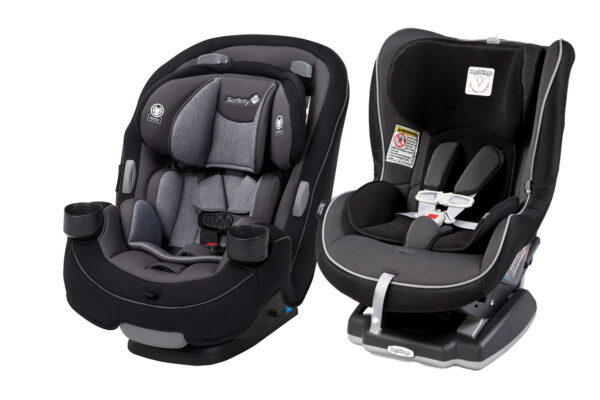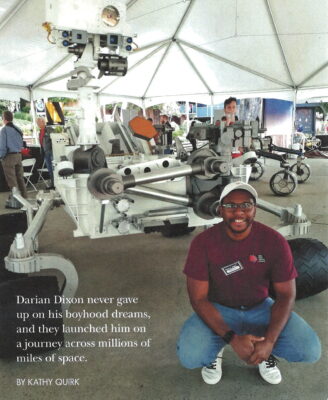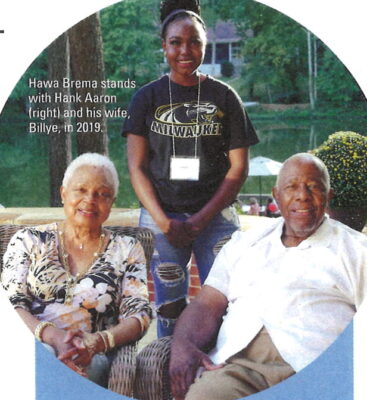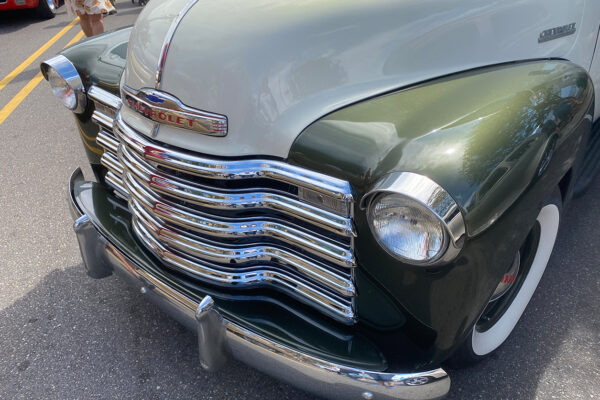Keeping children safe in cars of all kinds

Freelance article written for ADAMM (Automobile Dealers Association of Metro Milwaukee)
[Hedline]Keeping children safe in cars of all kinds
[Body copy]Being a new parent is like starting school for the first time. There are all sorts of new things to learn, some by trial and error.
However, one lesson new parents need to focus on right away is making sure their baby is safe and secure in their vehicle from the time the infant comes home to the hospital until the child outgrows a booster seat and moves to the seat belt system.
That’s because motor vehicles are the leading cause of death and injury for children, according to AAA. Child restraints, or car seats, reduce the risk of injury by 71 to 82 percent and reduce the risk of death by 28 percent in comparison to children in seat belts alone. Booster seats reduce the risk of nonfatal injuries by 45 percent when compared to the seat belts alone.
State laws require that all children be secured in a car seat appropriate for their age and size. The rules on this can vary from state to state. (The Insurance Institute for Highway Safety has an updated listing of new and proposed state rules on its website at IIHS.org).
In Wisconsin, here are the recommendations from the Department of Transportation website:
Birth – 12 months
Your child under age 1 should always ride in a rear-facing car seat.
There are different types of rear-facing car seats: Infant-only seats can only be used rear-facing. Convertible and 3-in-1 car seats typically have higher height and weight limits for the rear-facing position, allowing you to keep your child rear-facing for a longer period of time.
1 – 3 years
Keep your child rear-facing as long as possible. It’s the best way to keep him or her safe. Your child should remain in a rear-facing car seat until he or she reaches the top height or weight limit allowed by your car seat’s manufacturer. Once your child outgrows the rear-facing car seat, your child is ready to travel in a forward-facing car seat with a harness.
4 – 7 years
Keep your child in a forward-facing car seat with a harness until he or she reaches the top height or weight limit allowed by your car seat’s manufacturer. Once your child outgrows the forward-facing car seat with a harness, it’s time to travel in a booster seat, but still in the back seat.
8 – 12 years
Keep your child in a booster seat until he or she is big enough to fit in a seat belt properly. For a seat belt to fit properly the lap belt must lie snugly across the upper thighs, not the stomach. The shoulder belt should lie snug across the shoulder and chest and not cross the neck or face. Remember: your child should still ride in the back seat because it’s safer there.
Even for those parents who’ve mastered the rules, it’s always a good idea to refresh their knowledge when buying a brand new or preowned car. And, of course seat belt education is vital for first-time parents.
“There are new parents born every day,” says Denise Donaldson, owner of Safe Ride News which researches and published manuals and other educational materials for car safety professionals.
It’s a good idea to bring the seat along to the dealership when buying a new or preowned car, she adds, though few people do it. However, local auto dealers say they see many people bringing the car seats along.
“Many parents will bring in car seats during the test drive to make sure they fit and know how to lock them in,” says Dean Duston, new car sales manager for Holz Motors in Hales Corners.
“Especially if they have multiple car seats, they want to know how they fit in the car,” says Grant Sommer, sales and marketing director for Sommer’s Automotive. That’s important, he says, to make sure the seat leaves enough room for a tall driver when a rear facing seat is placed behind the driver’s side of the car, for example. “I’ve been in those and it’s not fun.”
In recent years, the LATCH system (Lower Anchors and Tethers for Children), which is part of all vehicles manufactured since 2002, has been making car seat installation simpler and more effective. The LATCH system uses hardware located between the seat bottom and the seat back. In forward facing seats, this is coupled with a tether that goes from the top of the seat to a hook behind the seat. The tether is designed to keep the child’s head from pitching forward in a sudden stop or accident.
Most parents seem to be comfortable with using the system, says Duston, making it easier for them in moving a car seat from one vehicle to another.
“I have several friends/customers who have child seats and they have never said a bad thing about it (LATCH). I think for them they just haven’t known any different. But having the same system in different vehicles also makes it easy to purchase newer cars because its already installed and something they know.”
The LATCH system is great, says Sommer. With three children, he’s had personal experience with front facing, rear facing and booster seats.
“Most people bring the seats with them in their trade-in, take the new car for a test drive and put the seats right in,” says Steve Starosta, sales consultant at Amato Ford in Mukwonago. One customer, a grandmother who regularly took care of her grandchildren, made a special point of bringing in the seats. “She wanted to make sure they fit in her new car and she knew how to install them,” says Starosta.
“I can’t give an exact percentage,” says Cristian Coroian, new car sales manager at Andrew Toyota in Glendale, but says he often sees families on the showroom floor with their seats, making sure they all fit. “We get many customers from Whitefish Bay and there are quite a few children there.”
While most dealerships don’t install car seats, they can explain the LATCH system and show customers where the attachment points for the latches and tether are located, answer questions and point them to resources like a local fire department for making sure they’ve installed the seats correctly. “We want to do everything we can to help them,” says Coroian.
SUVs and vans may make it easier to install car seats because there is more room to maneuver, says Duston.
“I would say our Equinox/Traverse have easiest install of a child seat due to the fact that they are SUVs, they are our best people movers and we sell them to a lot of families,” he says.
Having doors that open really wide is also helpful, said Sommer. “A lot of people who buy the Subarus have families so they need it to be easy.” For the LATCH system, “you just pull out two pieces of fabric that are velcroed in place and it’s right there…just hook it up and you’re ready.”
National statistics have shown that four out of five car seats are installed incorrectly so it’s important to have the car seat installation checked by a certified professional.
Safe Kids Southeast Wisconsin lists upcoming seat safety checks on its website at safekidswi.org. Another resource is the Safe Kids Certification Site-Find a Technician. This allows people to enter their city and find any technician willing to share their information, according to Libbe Slavin of Safe Kids Wisconsin.
The National Highway Traffic Safety Administration (NHTSA) website also contains links to help locate certified child safety seat inspectors.
Even though the LATCH system was designed to make correct installation easier, when it first came into widespread use, consumers had a few issues.
Some people have difficulty reaching between the seat bottom and back to connect the lower hooks and anchors. More commonly though, according to Donaldson, are challenges finding where to attach that vital top tether for forward facing seats In most sedans, the attachment is right behind the seat on the rear shelf, but in some SUVs and vans the attachment may be harder to find.
There’s are a lot of pieces of equipment that are near where a tether anchor could be that would be mistaken for a tether, says Donaldson. “It’s really dangerous to tether to something that’s a cargo hook for instance rather than a tether anchor.” A 2013 study by the Insurance Institute for Highway Safety showed that more than 50 percent of families didn’t attach the top tether.
In addition, some new regulations have set weight limits for the LATCH system – setting a maximum weight for the child and the seat because seats have become heavier and some states have raised the weight limit for children in forward facing seats. In this case, the car seats will have to be attached with the seat belt. This is more of an issue for car seat manufacturers, says Donaldson, who are required to mention any weight limit on the label.
The NHTSA has a car seat finder link on its website where families can enter the child’s age, height and weight to get recommendations for seats: https://www.nhtsa.gov/equipment/car-seats-and-booster-seats#find-compare-seats.
The Insurance Institute of Highway Safety now includes ratings of LATCH systems in its vehicle safety ratings at https://www.iihs.org/ratings/top-safety-picks.
In general, car seat and auto manufacturers are improving LATCH systems to make them easier to use, according to Donaldson. Four years ago, regulators proposed a number of rules on instructions, labeling and access. Even though those haven’t become law, many manufacturers are adopting them.
In fact, the Insurance Institute of Highway Safety’s newsletter, “Status Report,” noted in its June 20 issue (#54) this year that they’ve seen massive improvement in LATCH systems since 2015. “Nearly three-quarters of 2019 vehicles have LATCH hardware that rates good or acceptable for ease of use, as automakers continue making improvements that help parents and caregivers properly install child restraints,” according to the newsletter. “The results mark a shift from 2015, when IIHS launched its LATCH ease-of-use ratings. At that time, a majority of new vehicles rated poor or marginal. Today, 23 vehicles earn the top rating.”
Such rating systems are credited with many of the LATCH improvements, says Donaldson. “Manufacturers have noted things that are difficult to use and have made improvements to get better ratings.”
Being a new parent is like starting school for the first time. There are all sorts of new things to learn, some by trial and error.










